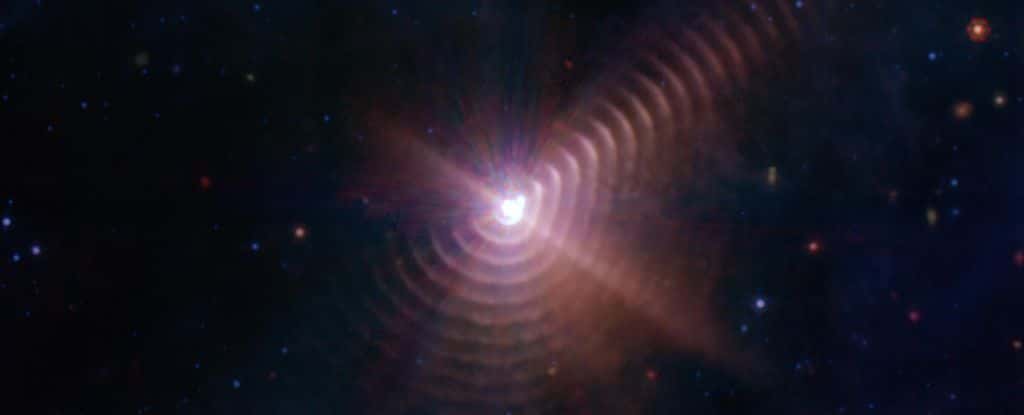
Translated and adapted by Matthaus Leinenker from ScienceAlert
Back when the universe was still just a small universe, there weren’t a lot of chemicals around. There was hydrogen, with a little helium and a few traces of other things. The heavier elements didn’t arrive until stars formed, lived, and died.
Imagine, then, the dismay of scientists when they used the James Webb Space Telescope to look into the far reaches of the universe, discovering large amounts of carbon dust less than a billion years after the Big Bang.
The discovery suggests that there was some way to increase carbon production in the turbulent early universe – most likely due to dying massive stars, which catapult them into space as they die.
“Our detection of carbonaceous dust at redshift 4–7 provides crucial constraints on models and scenarios for dust production in the early universe,” wrote a team led by cosmologist Joris Witstock at the University of Cambridge in the UK.
The first billion years of the life of the universe, known as the cosmic dawn, after the Big Bang 13.8 billion years ago, was a critical period. the first atoms formed; The first stars The first light shone in the darkness. But it took the stars themselves to create large amounts of elements heavier than hydrogen and helium.
In the hot, dense nuclear furnaces of star cores, stars collide with atoms, fusing them into heavier elements in a process called stellar nucleosynthesis. But those heavier elements accumulate in the star until it runs out of fusion material and dies, spewing its contents into the space around it. It is a process that usually takes some time.
Witstok and his colleagues used the JWST to study dust during the cosmic dawn and discovered something strange. They found an unexpectedly strong feature in the spectrum linked to the absorption of light by carbon-rich dust in galaxies 800 million years after the Big Bang.
The problem is that these dust grains are thought to take a few hundred million years to form, and the properties of the galaxies indicate that they are very young for this formation time scale. But it is not an insoluble problem.
The Crab Nebula (NASA/ESA, Alison Lull/Jeff Hester/ASU, David D. Martin/ESA/Hubble)
He believed that the first stars in the universe were much larger than the smallest stars we see around us today. Because more massive stars burn through their fuel reserves more quickly, they will live relatively short lives, exploding in supernovae that would have dumped heavier material relatively early.
There are also stars out there today that are absolute dust factories. They are called Wolf-Rayet stars, massive stars that have reached the end of their lives, on the verge of becoming a supernova. They don’t have a lot of hydrogen left, but they do have a lot of nitrogen or carbon, and they’re in the process of giving off mass at a very high rate. This extruded material is also rich in carbon.
The discovery of large amounts of carbon in multiple galaxies during the cosmic dawn could be evidence that not only were these processes occurring, but that they were more common during the early universe than in more recent spacetime.
This, in turn, suggests that massive stars were the norm for the first generation, which helps explain why we don’t see any of them still orbiting the universe today.

“Web geek. Wannabe thinker. Reader. Freelance travel evangelist. Pop culture aficionado. Certified music scholar.”





